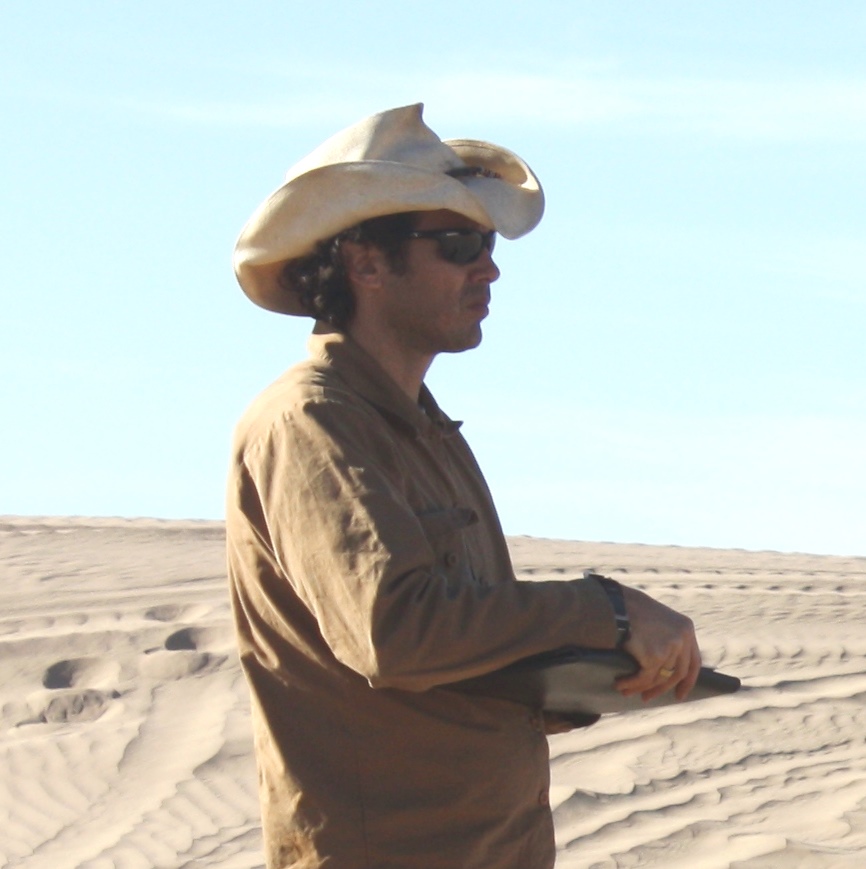It began as a childhood experience cracking open shale on the side of a mountain in Monterey that started a lifelong love affair with history.
“I was mesmerized that evidence of the past could be found hidden in the ground around us,” Seth Mallios, longtime San Diego State anthropology and archaeology professor said. “That delight has never left me and led me to the fields of archaeology, anthropology and history.”
His students, who cite his immense passion for uncovering things and his interesting perspective on the past, see him as an inspirational figure. Amethyst Sanchez, an anthropology and sociology major, credits him and their many chats to changing her perspective and giving her the drive to achieve her goals.
“Without him, I probably would only have minored in anthropology, which is now the field I want to spend my life working in,” Sanchez said. “I would have missed out on so many incredible opportunities to do actual anthropological work before even earning my degree.”
Long before he called SDSU his home, Mallios’ career as an anthropologist started in Virginia, where he taught the introductory anthropology and the Jamestown Field School in Historical Archaeology courses at the University of Alabama. After his move to San Diego, he noticed the stark contrast between the ways regional history was looked at between the two cities.
“I also know that seeing different areas of the country where, in some places, the past is revered and you would never think of developing over a cemetery,” Mallios said. “You can’t go into a grocery store without someone telling you that they are a descendant of John Smith or Pocahontas and then coming out here and it being just the opposite.”
His first major project in San Diego was a gravestone project where he discovered many of the graveyards were intentionally paved over for freeways, buildings and roads.
“I wasn’t expecting too many surprises and the joke was on me because 75 percent of San Diego’s cemeteries have been developed over and I had just come from Jamestown,” Mallios said. “Everybody there is so into talking about the past, thinking about the past.”
In the classroom, Mallios’ passion for history is passed on to his students. One of his fundamental teaching philosophies is that students need hands on experience in the field to really understand what excavating is like in the real world, compared to the glamorized version of it that appears on TV.
“Dr. Mallios lets the students go through every process of a dig,” Farnsworth said. “We measured the units, we dug the dirt, we screened the dirt, we mapped the walls of our unit, we filled out the paperwork, we took soil samples and we were able to experience a real dig.”
Recently Mallios was named official university curator, a title he takes just as serious as his studies or excavations.
“It is rewarding to see the university formally acknowledge the importance of its own history and culture,” he said. “I believe that these distinctive aspects should be celebrated and preserved, and this position allows me to do that.”
Jamie Lennox, an associate professor of anthropology and one of Mallios’ former students, is the current interim director of SDSU’s collections management program and has assisted him with numerous projects over the years.
One of the major projects was co-authoring the five-volume book set titled “Let It Rock!” which was a retrospective of all the live events hosted at SDSU.
“It’s a very meticulous process – you cast a wide net and literally go through everything very slowly and carefully,” Lennox said. “You take copious amounts of notes, as you frequently will need to revisit something or retrace your steps.”
Together with Lennox, Mallios has preserved artifacts from SDSU’s colorful past including multiple WPA mementos such as benches, plaques and murals — some of which are preserved in the campus library.
“These clues to an earlier time when the campus was much smaller, when there was no city around it,” Mallios said. “That gets to a deeper understanding of not only San Diego State’s place in the community, but the hundreds of thousands of people that experienced it here on campus.”
Mallios sees SDSU’s history as more of a grey area than just black and white. He cites well known places on campus like Hepner Hall as examples of how buildings that have been seen as divisive have underlying meanings like the Muslim influence on the construction of SDSU’s iconic hall.
“I never knew about the history of SDSU,” Shannon Farnsworth, an anthropology and history major, said. “In class we read his book ‘Hail Montezuma’ and then went on a scavenger hunt to some of the historical places on campus. It makes me really proud to go here and I feel more connected to the school and my fellow classmates.”
Mallios’ current passion project is working on a book on the history of Nate Harrison, San Diego’s first permanent African American resident and frontiersman. He brought four of his students with him to excavate on Palomar Mountain during spring break to uncover new artifacts about Harrison and explore San Diego’s history back when it was known as the “Selma of the south.”
He hopes his book will be slated for release at the end of 2019.
After all these years, Mallios says he still gets the same feeling when he discovers something new – the same one he feels when uncovering new things at the Nate Harrison site and the gravestones he explored when he first moved to San Diego.
“There is the thrill of finding something that has been lost or forgotten,” Mallios said. “The contentment of seeing how this missing piece helps make sense of the chaos of today’s world.”







